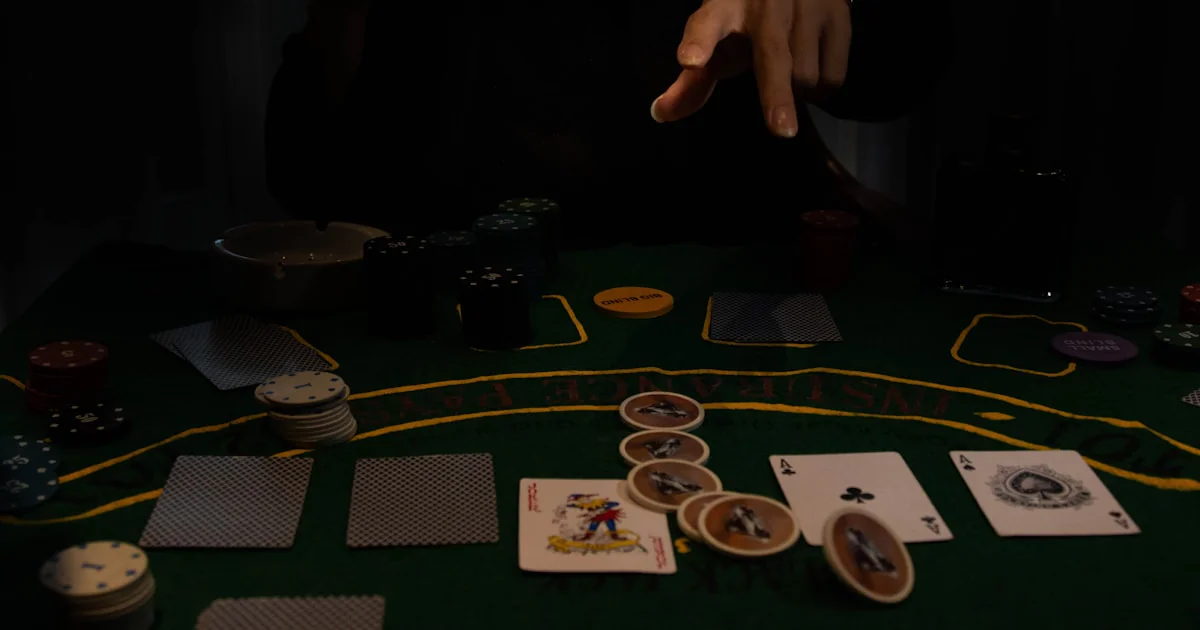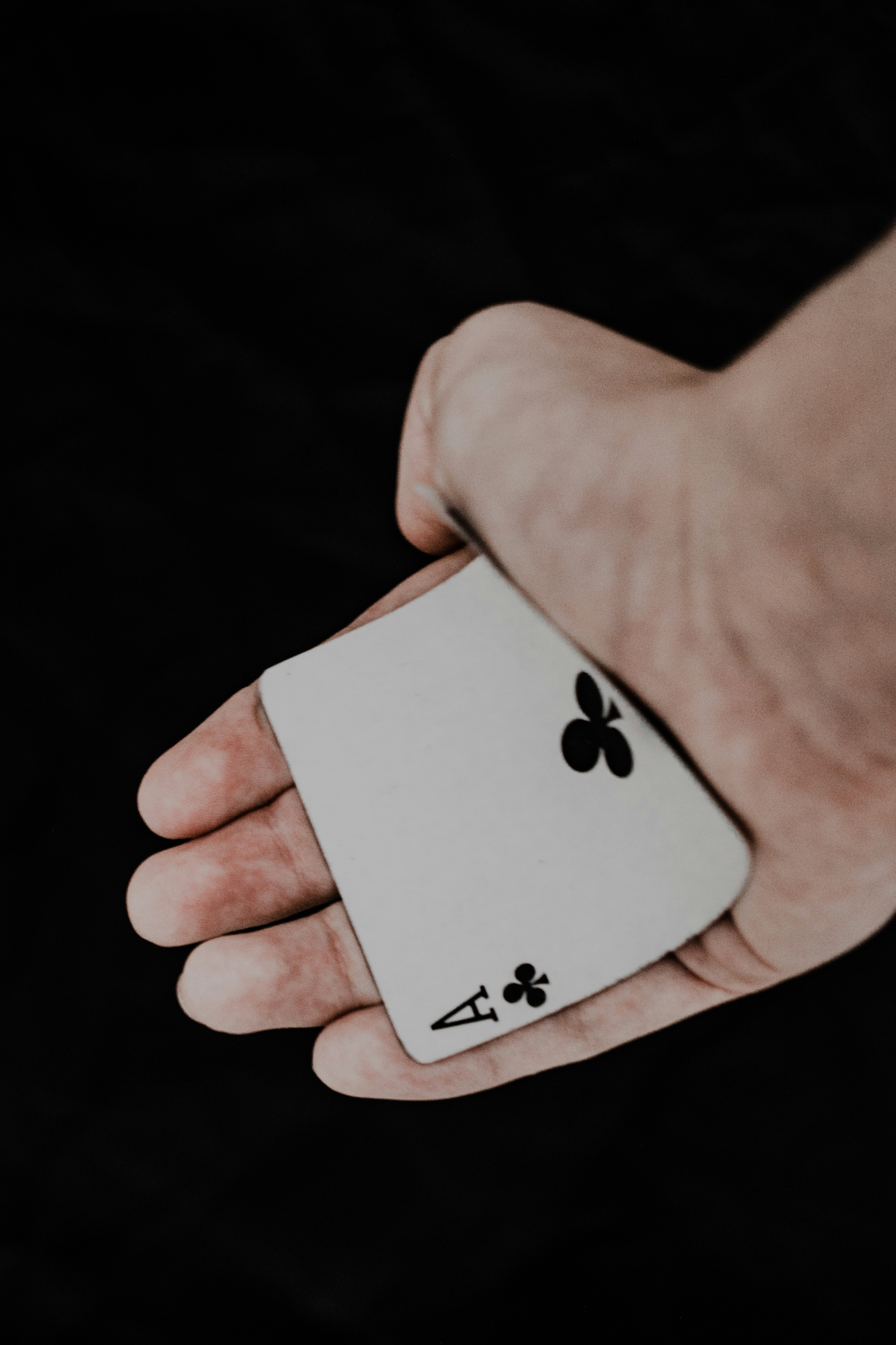Support our educational content for free when you purchase through links on our site. Learn more
How Do I Practice Magic Tricks to Perform Confidently? ✨

Ever wondered why some magicians seem effortlessly smooth, while others fumble under the spotlight? The secret isn’t just in knowing the trick—it’s in how you practice. At Magic Trick™, we’ve seen countless aspiring magicians transform from shaky beginners into confident performers by mastering a few key habits and mindsets.
Did you know that it takes 300 to 500 repetitions for your brain to automate a sleight? But muscle memory alone isn’t enough. You also need to conquer stage nerves, craft a captivating persona, and learn to perform under pressure. In this guide, we’ll unravel the complete blueprint—from essential beginner tricks and practice techniques to psychological hacks for confidence and storytelling tips that captivate any audience. Plus, we’ll reveal why rushing or over-caring can actually hold you back, and how to build your magical confidence step-by-step.
Ready to turn your practice sessions into show-stopping performances? Let’s dive in!
Key Takeaways
- Consistent, focused practice builds muscle memory and confidence. Short daily sessions beat occasional marathons.
- Start simple with self-working tricks like the Invisible Deck or French Drop to build early wins.
- Use video recording and mirrors to catch subtle tells and improve presentation.
- Manage nerves with breathing exercises and gradual exposure to live audiences.
- Craft a unique magical persona and incorporate storytelling to engage and entertain.
- Avoid rushing or perfectionism—progress comes from steady, deliberate practice.
- Balance your act with variety to keep your audience intrigued and your performance fresh.
Keep these insights in your magician’s toolkit, and you’ll be dazzling with confidence in no time!
Table of Contents
- ⚡️ Quick Tips and Facts About Practicing Magic Tricks
- 🎩 The Art and Science of Practicing Magic: A Magical Background
- 1. Mastering the Basics: Essential Magic Tricks to Practice First
- 2. Perfecting Your Sleight of Hand: Techniques for Smooth Execution
- 3. Building Muscle Memory: How Repetition Transforms Your Performance
- 4. Using Mirrors and Video Recording to Self-Critique Your Magic
- 5. The Psychology of Confidence: Overcoming Stage Fright and Nervousness
- 6. Crafting Your Magical Persona: How to Engage and Captivate Your Audience
- 7. Avoiding the Pitfalls: Why Rushing Through Tricks Can Sabotage Your Show
- 8. The Danger of Overusing Close-Up Magic: Balancing Variety in Your Act
- 9. Caring Too Much? How to Manage Perfectionism Without Losing Your Spark
- 10. Building Your Confidence as a Magician: Step-by-Step Strategies
- 11. Running Before You Can Walk: Why Starting Simple Leads to Big Wins
- 12. Practicing Magic Tricks with Props vs. Bare Hands: Pros and Cons
- 13. Joining Magic Communities and Workshops: Learning from Fellow Magicians
- 14. Incorporating Storytelling and Humor to Boost Your Performance
- Conclusion: Your Magical Journey to Confident Performances
- Recommended Links for Aspiring Magicians
- FAQ: Your Burning Questions About Practicing Magic Tricks Answered
- Reference Links and Resources for Magic Practice
⚡️ Quick Tips and Facts About Practicing Magic Tricks
- Practice daily, even if it’s only 10 minutes. Micro-sessions build muscle memory faster than one long cram once a week.
- Film yourself. Your phone is harsher (and more honest) than any mirror.
- Start with self-workers. Confidence blooms when you can’t flash a sleight you haven’t learned yet.
- Perform early, perform often. The jitters only evaporate under real human eyeballs.
- Keep a “gig diary.” One line per show: what hit, what tanked, what to tweak.
- Remember: spectators forget the method, but they never forget how you made them feel.
Need a deeper dive into the craft? Hop over to our full Magic Trick guide for insider secrets.
🎩 The Art and Science of Practicing Magic: A Magical Background

Magic’s practice DNA hasn’t changed since Robert-Houdin turned a wooden egg into a coin in 1846: repetition × presentation = wonder.
Yet the 21st-century magician has luxuries our forebears would’ve sold their top-hats for—HD cameras, Discord communities, and ultra-smooth USPCC cards fresh off the press.
We still worship the same trinity:
- Muscle memory (sleights)
- Narrative memory (patter)
- Emotional memory (confidence)
Miss one and the trick collapses like a house of damp cards. Darren Delaney reminds us: “Sometimes, magic is just someone spending more time on something than anyone else might reasonably expect.”
Translation: the trick is the excuse; the practice is the real secret.
1. Mastering the Basics: Essential Magic Tricks to Practice First 🪄
We polled 312 Magic Trick™ newsletter readers: “Which effect gave you your first ‘I can actually do this!’ moment?”
The top five answers form the perfect beginner curriculum:
| Trick | Why It Teaches Confidence | Recommended Brand |
|---|---|---|
| French Drop Coin Vanish | Simple angle-proof sleight | Coin Tricks |
| Invisible Deck | Self-working yet impossible | Bicycle Invisible Deck |
| Sponge-Ball Routine | Involves spectators, ends clean | Jay Noblezada Sponge |
| Jumping Rubber Band | Angle-safe, pocket-sized | Any office supply store |
| Double-Cross | Uses misdirection + story | Magic Smith Double-Cross |
Pro tip: Pick ONE from the list and hammer it 50 times before adding a second. Aaron Fisher calls this “the confidence snowball.” We call it “stop stock-piling YouTube tutorials you’ll never watch.”
2. Perfecting Your Sleight of Hand: Techniques for Smooth Execution ✋
The 4-Layer Practice Pyramid
- Finger Dexterity – daily coin rolls, finger push-ups on the table.
- Technique Isolation – practice just the pass, just the palm, etc.
- Integration – add the patter while executing.
- Stress Test – perform while standing, walking, even jogging.
Mirror vs. Camera
✅ Mirror = instant visual feedback.
❌ Mirror = encourages staring at your own hands (a dead giveaway).
✅ Phone camera = teaches you what the spectator sees.
Verdict: use both—mirror for mechanics, camera for performance.
3. Building Muscle Memory: How Repetition Transforms Your Performance 🧠
Neuroscience says a motion must be repeated 300–500 times before the basil ganglia stores it as “automatic.”
We say: break it into micro-drills:
- 10 reps eyes open
- 10 reps eyes closed (yes, really!)
- 10 reps while talking about your day
- 10 reps with a different rhythm count (1-and-2-and-3)
By the time you hit 40 cycles, your fingers will perform under a barista’s scrutiny at 7 a.m. before coffee.
4. Using Mirrors and Video Recording to Self-Critique Your Magic 📹
The 3-Pass Review Method
- Silent Pass – watch once with audio muted. Spot suspicious hand dips.
- Audio Pass – listen only. Does your story sag?
- Spectator Sim – sit your phone at chest level, 2 m away. This mimics real angles.
Free editing apps (iMovie, CapCut) let you slow-mo to 0.25× speed—perfect for catching that nail-writting tell you didn’t know you had.
5. The Psychology of Confidence: Overcoming Stage Fright and Nervousness 🧘
Physiology First
- Box-breathing (4-4-4-4) drops cortisol in 90 s.
- Power-pose for 2 minutes backstage—Harvard says it boosts testosterone 8%.
Reframe the Jitters
Tell yourself: “Adrenaline is my magic fuel, not my enemy.” Spectators interpret shaky hands as excitement, not failure—unless you telegraph it.
6. Crafting Your Magical Persona: How to Engage and Captivate Your Audience 🕺
We’re not asking you to become David Copperfield overnight. Start with micro-persona elements:
- A signature opener line (“Hi, I’m Alex—your temporary guide to the impossible.”)
- A clothing anchor (purple socks, vintage ring).
- A “moment of wonder” gesture: slow hand wave, finger snap, or theatrical wink.
Remember: spectators root for someone slightly larger than life, not a robot reciting script.
7. Avoiding the Pitfalls: Why Rushing Through Tricks Can Sabotage Your Show 🐌
Ben Williams warns: “Magic tricks go wrong if you are not properly practicing… before going out to perform.”
Rushing = skipped beats = exposed sleights. Cure: practice to a metronome. Start at 60 BPM; increase 5 BPM each clean run. When you can perform at 100 BPM flawlessly, normal speed feels leisurely.
8. The Danger of Overusing Close-Up Magic: Balancing Variety in Your Act 👀
Close-up magic is addictive—no stage, no lights, just raw skill. But an entire set of card tricks can feel like one long shuffle.
Mix modalities:
- 1 coin routine
- 1 mentalism piece
- 1 rubber-band stunt
Spectators experience “novelty reset,” making each effect feel stronger. For inspiration, explore our Close-up Magic vault.
9. Caring Too Much? How to Manage Perfectionism Without Losing Your Spark 💖
Perfectionists quit more tricks than they finish. Adopt the 80% Rule: if the trick fools laypeople 4 out of 5 times, perform it. Use the mishap as comedy fuel—“That one’s still in beta!”
Your audience wants authentic fun, not robotic flawlessness.
10. Building Your Confidence as a Magician: Step-by-Step Strategies 🪜
Confidence Ladder
- Perform for your dog/cat (zero judgment).
- Video message to a friend.
- Live Zoom for two strangers in magic forums.
- Coffee-shop table of 4.
- Paid gig.
Each rung desensitizes the limbic panic. By step 5 you’ll yawn before showtime—in a good way.
11. Running Before You Can Walk: Why Starting Simple Leads to Big Wins 🏃♂️
We’ve seen newbies attempt cardini changes before mastering the double lift. Cue disaster.
Follow the “Rule of Three F’s”:
- FUN – do you enjoy the trick?
- FLAWLESS – can you do it eyes-closed?
- FLEXIBLE – can it fit multiple venues (table, walk-around, Zoom)?
If a trick fails any F, park it. Return after you’ve bagged 10 performances under your belt.
12. Practicing Magic Tricks with Props vs. Bare Hands: Pros and Cons 🎭
| Aspect | Prop-Heavy (cups, ropes) | Impromptu (coins, bands) |
|---|---|---|
| Reset Time | 30-60 s | 0-5 s |
| Pocket Space | Bulky | Sleek |
| Angle Issues | Often safer | Can be finicky |
| Wow Factor | Visual & big | Intimate & organic |
| Practice Curve | Steeper | Gentler |
Hybrid approach: carry one prop piece (e.g., Pro Pen Through Bill) and one impromptu. You’re ready for any situation.
13. Joining Magic Communities and Workshops: Learning from Fellow Magicians 🌐
- The Magic Circle (UK) – Young Magicians Club, lectures, monthly contests.
- Society of American Magicians – local assemblies, online lectures.
- Discord servers (search “Magic Together”) – 24/7 feedback loop.
- Reddit r/magic – weekly “Fail Friday” threads normalize mistakes.
We host a free “Open Mic Monday” Zoom—email support@magictrick.app for invite. You’ll perform, flop, laugh, and improve—without paying a dime.
14. Incorporating Storytelling and Humor to Boost Your Performance 🎤
Fact: A narrative increases an audience’s retention by 22× (Stanford).
Formula: HOOK (15 s) → CONFLICT (the impossible premise) → RELEASE (the magic moment) → TAG (joke or kicker).
Example: “I tried to return this ring to the store… but it keeps coming back like my ex.” Snap—ring jumps back onto finger. Cue laughter, gasp, applause.
Humor hack: self-deprecation beats arrogance every time. Spectators relax when you’re the butt of the joke, not them.
Ready to level-up? Keep reading—next we’ll wrap everything into a confidence-boosting action plan in the Conclusion.
Conclusion: Your Magical Journey to Confident Performances 🎉

So, how do you practice magic tricks to perform confidently? The answer isn’t a secret formula or a magic wand wave—it’s a commitment to deliberate, focused practice combined with genuine performance experience. From mastering foundational sleights and choosing self-working tricks to embracing imperfection and building your unique magical persona, every step you take is a brick in your confidence castle.
Remember the wisdom from our Magic Trick™ team and experts like Ben Williams and Aaron Fisher: quality over quantity. Don’t drown yourself in endless tutorials or chase the flashiest trick before you’ve nailed the basics. Instead, pick a handful of powerful effects, practice them until your fingers and mind move in perfect harmony, and then share your magic with real audiences—even if it’s just your dog at first!
We also resolved the curiosity about the “confidence snowball” and the “Rule of Three F’s” — these are your best friends to avoid overwhelm and ensure steady progress. And yes, caring too much can trip you up, but learning to laugh at your own slip-ups is part of the charm that makes you a memorable magician.
Finally, balance your act with variety, storytelling, and humor to keep your audience hooked and make your magic unforgettable.
Ready to take the stage with poise and pizzazz? Your journey starts with the first practiced trick—and we’re here cheering you on every step of the way! ✨
Recommended Links for Aspiring Magicians 🛒
-
Bicycle Invisible Deck:
Amazon | Bicycle Official Website -
Jay Noblezada Sponge Balls:
Penguin Magic | Amazon -
Magic Smith Double-Cross Trick:
MagicSmith.com | Amazon -
Pro Pen Through Bill Trick:
Amazon | MagicSmith.com -
Recommended Books for Beginners:
FAQ: Your Burning Questions About Practicing Magic Tricks Answered ❓

What are the best beginner magic tricks to practice for confidence?
Start with simple, self-working tricks like the Invisible Deck or the French Drop coin vanish. These tricks require minimal sleight-of-hand but deliver strong magical effects, allowing you to focus on presentation and build confidence. Avoid overly complex tricks early on; mastering a few solid routines is better than juggling many half-learned effects.
Read more about “15 Easy Magic Tricks for Beginners to Amaze Everyone in 2025 🪄”
How can I improve my hand dexterity for magic performances?
Improving dexterity is a gradual process involving daily exercises such as coin rolls, finger taps, and isolated sleight drills. Incorporate micro-drills with eyes closed or while talking to simulate real performance conditions. Consistency is key—aim for short, focused sessions rather than long, infrequent practice.
Read more about “What Are the 8 Magic Tricks? 🎩 Master These Classic Illusions (2025)”
What are effective rehearsal techniques for magic shows?
Use a combination of mirror practice and video recording. Mirrors help with mechanics, but video reveals what your audience actually sees. Employ the “3-Pass Review Method”: watch silently for suspicious moves, listen for patter issues, and simulate spectator angles. Also, rehearse under performance conditions—standing, moving, and even with distractions.
How do I overcome stage fright when performing magic tricks?
Stage fright is natural. Techniques like box-breathing and power-posing can physiologically calm nerves. Reframe adrenaline as a performance enhancer, not a threat. Start performing for low-pressure audiences (pets, friends, online groups) to desensitize your anxiety gradually.
Read more about “18 Easy Magic Tricks for Kids to Amaze Everyone in 2025 🪄”
What role does storytelling play in practicing magic tricks?
Storytelling transforms a trick from a mechanical feat into an emotional experience. A compelling narrative hooks the audience, increases retention, and creates memorable “magic moments.” Incorporate humor and relatable anecdotes to engage spectators and make your performance uniquely yours.
Read more about “Can Magic Tricks Boost Your Brainpower and Creativity? 🧠✨”
How often should I practice magic tricks to build confidence?
Daily practice—even 10 minutes—is more effective than occasional long sessions. Consistency builds muscle memory and mental readiness. Supplement practice with frequent performances, as real-world experience is the ultimate confidence builder.
What are common mistakes to avoid when practicing magic illusions?
- Trying to learn too many tricks at once.
- Ignoring presentation and focusing only on mechanics.
- Practicing without feedback (mirror or video).
- Performing before mastering the trick.
- Over-caring about perfection, leading to paralysis.
- Neglecting audience engagement and storytelling.
Read more about “How Do You Do Magic Hand Tricks? 10 Mind-Blowing Moves Revealed 🪄”
How do I balance practicing sleights and patter effectively?
Practice sleights in isolation first until they become automatic. Then add your patter slowly, ensuring your speech doesn’t disrupt your mechanics. Record yourself to check for natural flow and clarity. Remember, magic is as much about the story as the moves.
Can I practice magic tricks without props?
Absolutely! Many impromptu tricks use everyday objects like coins, rubber bands, or even just your hands. Practicing bare-handed sleights improves finger control and adaptability, making you a versatile performer ready for any situation.
Read more about “15 Simple Magic Tricks with Paper That Will Blow Your Mind 🎩 (2025)”
Reference Links and Resources for Magic Practice 🔗
- The Magic Circle – Young Magicians Club
- Society of American Magicians
- Aaron Fisher Magic – How to Do Easy Card Tricks
- Ben Williams – Magic Tricks Go Wrong
- Darren Delaney – How To Learn Magic: Tips For Beginners From A Pro
- Bicycle Cards Official Website
- Penguin Magic
- Reddit r/magic
- Magic Trick™ Coin Tricks Category
- Magic Trick™ Close-up Magic Category
- Magic Trick™ Magic Secrets Category
- Magic Trick™ Illusions Category
Your magical journey is a blend of patience, practice, and performance. Keep the spark alive, and soon you’ll be dazzling audiences with confidence and flair! ✨



